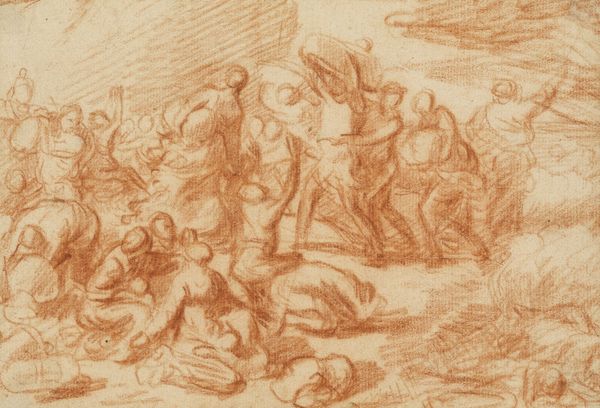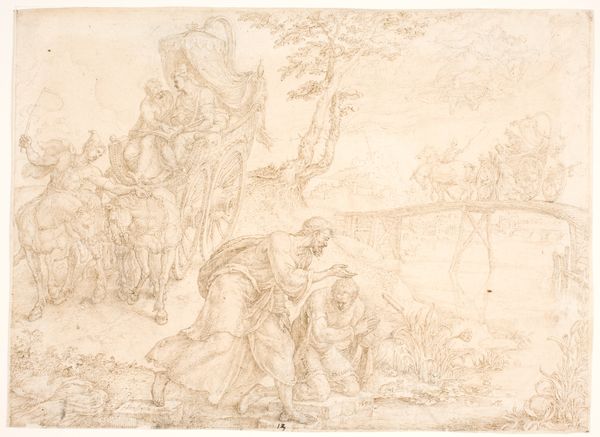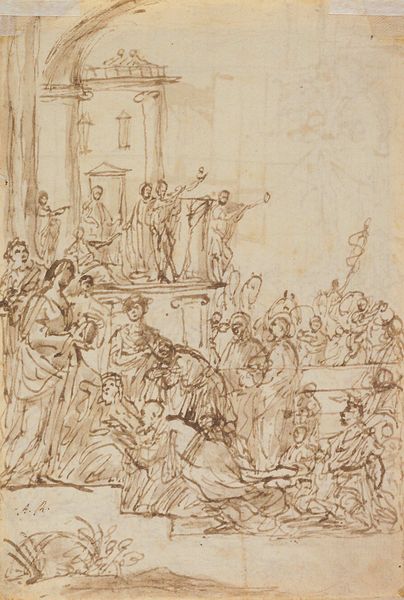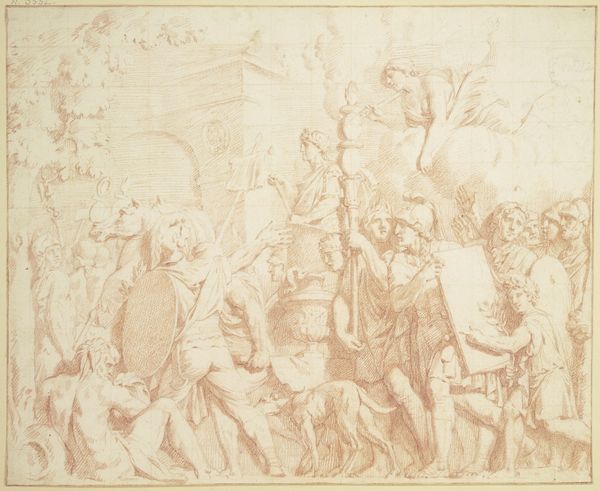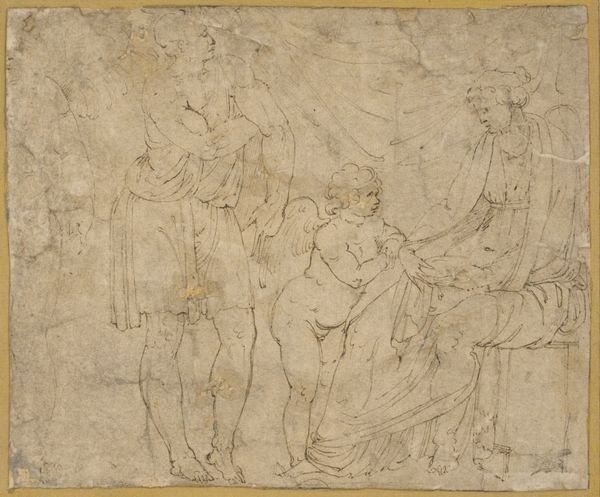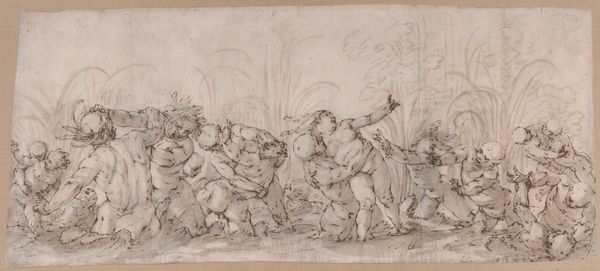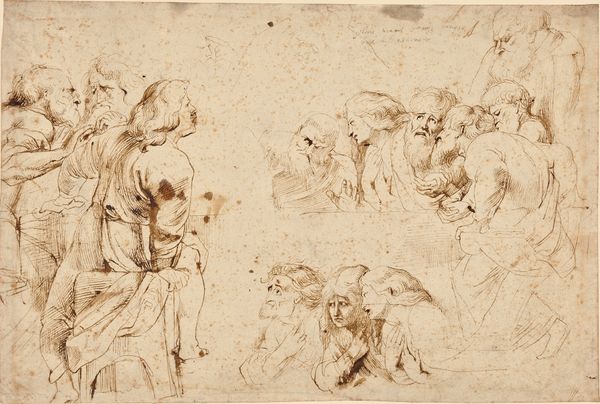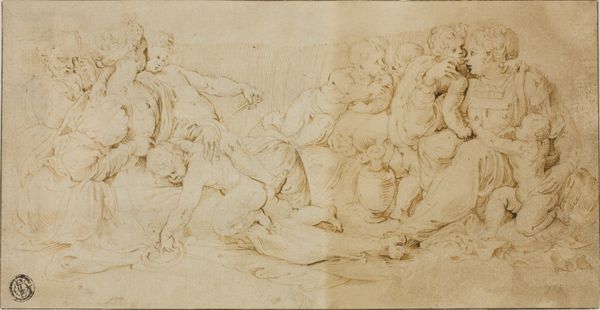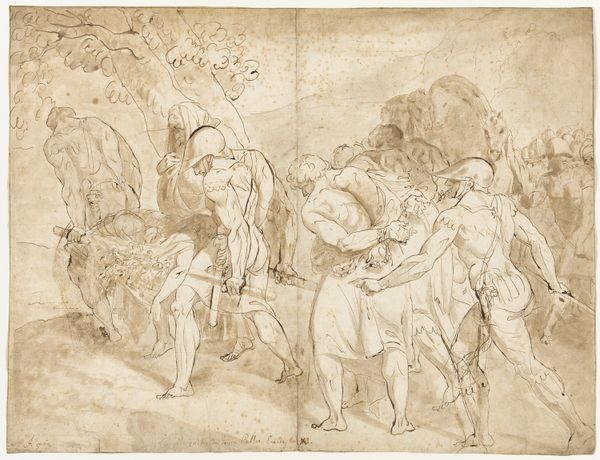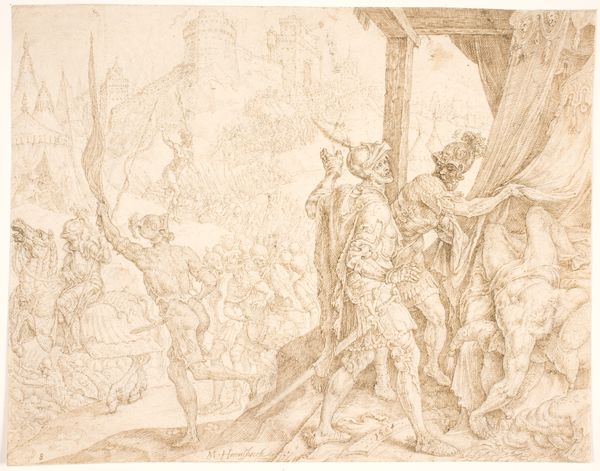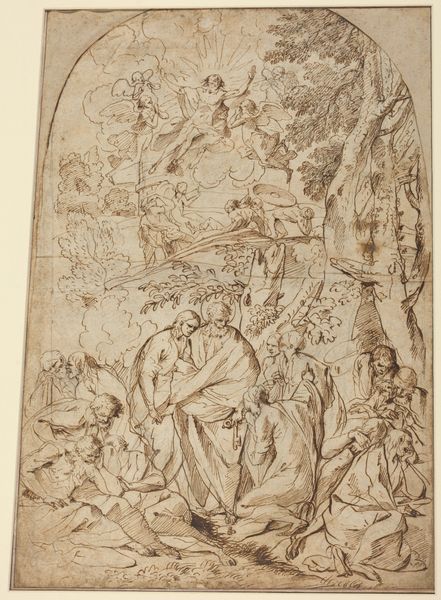
drawing
#
drawing
#
neoclacissism
#
narrative-art
#
figuration
#
history-painting
#
academic-art
Copyright: Public Domain: Artvee
Curator: Anne-Louis Girodet’s preparatory drawing, dating back to 1810, is called "Study for The Revolt of Cairo." The scene seems… intense, would you agree? Editor: Intensely frantic! A tangle of limbs and weapons—it's like looking at a battlefield caught in a blender. There's a brutal energy to it. And yet, it's just a sketch! Incredible. Curator: Indeed. The composition adheres to neoclassical principles, emphasizing line and form to create a sense of order amidst the chaos. Notice how the figures are arranged to guide the viewer's eye across the scene, using gesture and implied lines to define relationships between individuals. The technique also lends a sense of the epic and timelessness associated with academic art and history painting. Editor: "Order" might be a strong word. I get more of a sense of people desperate to avoid the swing of the nearest blade, even within those neat lines. What’s particularly striking is how Girodet suggests the weight of bodies falling or straining. It feels so real and lived in, not just an exercise in aesthetics. Curator: Certainly, and we see in that vitality a narrative unfolds. Girodet seeks to represent a specific historical moment: the 1798 revolt of the people of Cairo against their French occupiers. The drawing aims to capture not just the physical conflict, but also the emotional turmoil inherent in such a clash of cultures. It functions as more than a mere record of events, doesn't it? Editor: Absolutely, there's a strong undercurrent of resistance humming beneath the surface. You know, it's funny how sketches, like this one, often reveal so much more of an artist's raw talent. It’s like a whispered secret, showing a more vulnerable side than a grand, finished canvas might. Curator: It's that vulnerability and the ability of lines to express action and emotional intensity that makes this preliminary work truly compelling, inviting closer inspection. Editor: Right. I think this work challenges the myth of objective historical painting. The revolt pulses with the artist's own interpretation. Curator: Precisely! By reducing the narrative to its fundamental structure and raw emotional core, this study allows us to feel the urgency. Editor: A brutal scene, yes, but also beautifully rendered. So many untold stories caught in a single drawing, wouldn’t you agree?
Comments
No comments
Be the first to comment and join the conversation on the ultimate creative platform.

